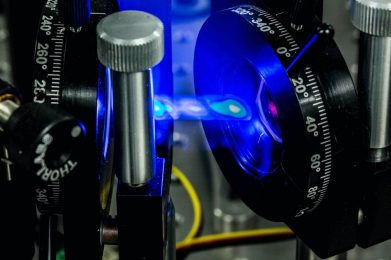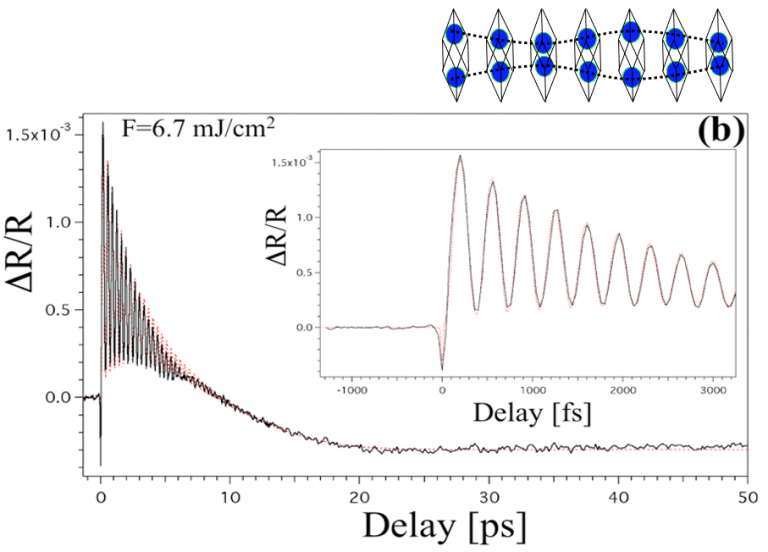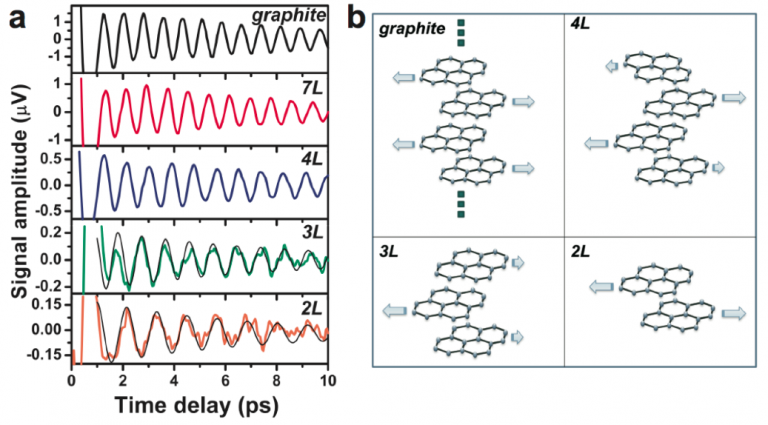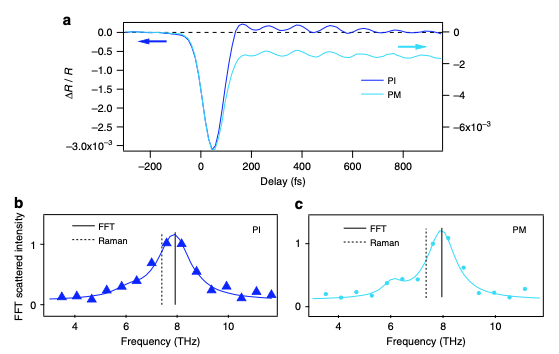Femtosecond time-resolved spectroscopy

We have set up a time-resolved spectroscopy experiment with a time resolution of tens of femtoseconds. This setup has been enhanced by using three optical parametric amplifiers that allow us to tune the pump and probe pulse independently, in a spectral range from 250 nm down to 20 microns. In the visible spectral range, we can even achieve sub-10 fs time resolution. This experimental setup is also equipped with a cryostat to control the sample temperature between 4 K and 300 K. We use this experiment to follow in real-time the movements of atoms and electrons. In particular, we are able to control the atomic vibrations, and excite them selectively. This is the so-called coherent phonon. These studies aim at understanding how the elementary motion of atoms and electrons is involved in transport properties, as well as in photoinduced phase transitions.
References :
D.Boschetto*, E. G. Gamaly, A. V. Rode, B. Luther-Davies, D. Glijer, T. Garl, O. Albert, A. Rousse, and J. Etchepare, reply to comment on « Small atomic displacements recorded in bismuth by the optical reflectivity of femtosecond laser-pulse excitation », Physical Review Letters 102, 029702 (2009).
T.Garl, E.G. Gamaly, D. Boschetto, A. V. Rode, B. Luther-Davies, and A. Rousse, « Birth and decay of coherent optical phonons in femtosecond-laser-excited bismuth », Physical Review B 78, 134302 (2008).
D. Boschetto*, Leandro Malard, Chun Hung Lui, Kin Fai Mak, Zhiqiang Li, Hugen Yan and Tony F. Heinz, «Real-time observation of interlayer vibrations in bilayer and few-layer graphene», Nano Letters 13, 4620 (2013).


Ultrafast dynamics in highly correlated materials: Highly correlated materials represent a major challenge from both fundamental and applied perspectives. In these materials, the interaction between all the degrees of freedom of the crystal, such as charge carriers and phonons, produces very rich thermodynamic phase diagrams. This is the case for example for superconductors or Mott insulators. The use of time-resolved spectroscopy can reveal the mechanisms at the origin of these phases, as well as the appearance of so-called non-thermal phases, because the photoinduced state is different from the states at thermodynamic equilibrium. We have studied for example the dynamics of the electron-phonon interaction in superconductors (iron pnicture), as well as in a Mott insulator, V2O3. In the latter, we have even observed an atypical effect compared to other materials studied: the photoexcitation produces a hardening of the V-V bond with a non-thermal character.

References:
G.Lantz et al., «Ultrafast evolution and transient phases of a prototype out-of-equilibrium Mott-Hubbard material», Nature Communications 8, 13917 (2017).
B.Mansart, D. Boschetto*, S. Sauvage, A. Rousse and M. Marsi, « Mott transition in Cr-doped V2O3 studied by ultrafast reflectivity: Electron correlation effects on the transient response», European Physics Letters 92, 37007 (2010).
B.Mansart, D. Boschetto, A. Sambri, R. Malaquias, F. Miletto Granozio, U. Scotti di Uccio, P. Metcalf and M. Marsi, « Ultrafast dynamical response of strongly correlated oxides: role of coherent optical and acoustic oscillations », Journal of Modern Optics 57, 959 (2010).
B.Mansart, D. Boschetto*, A. Savoia, F. Rullier-Albenque, F. Bouquet, E. Papalazarou, A. Forget, D. Colson, A. Rousse and M. Marsi, « Ultrafast transient response and electron-phonon coupling in the iron-pnictide superconductor Ba(Fe1-xCox)2As2 », Physical Review B 82, 024513 (2010).
B.Mansart, D. Boschetto*, A. Savoia, F. Rullier-Albenque, A. Forget, D. Colson, A. Rousse, and M. Marsi, « Observation of a coherent optical phonon in the iron pnictide superconductor Ba(Fe1-xCox)2As2 (x=0.06 and 0.08) », Physical Review B 80, 172504 (2009)
Contact: Davide Boschetto
People involved: Davide Boschetto, Emmanuel Peronne, Mateusz Weis, postdoctoral researcher, Simon Mizrahi


